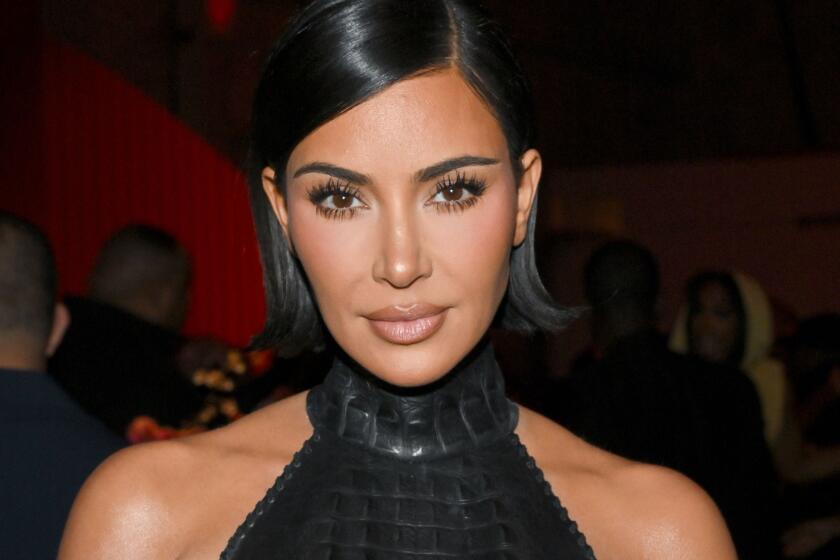MUSIC REVIEW : Adams’ Meek Modernism at Pavilion
- Share via
It wasn’t exactly a humdrum opening at the Dorothy Chandler Pavilion. Thursday’s concert by the Los Angeles Philharmonic--devoted to and conducted by John Adams--may have entailed a lot of drumming, but it gave the faithful subscribers very little to hum.
Did I say faithful ? The adjective represents something of an exaggeration in this context.
Many of the regular first-nighters regard their weekly symphonic therapy session as a comfy excuse to snooze to the tunes of Beethoven and Tchaikovsky. If the subscribers suspect any sort of modernist invasion, any attack by a contemporary dissonance-monger, any strenuous exercise in ear- or mind-stretching, they tend to find themselves urgently occupied elsewhere.
At best, they give the tickets to the kids. At worst they come by mistake, but leave by intermission.
Even Esa-Pekka Salonen, our ambitious and provocative music-director-to-be, recognizes the problem. “I don’t know if we will find a new audience,” he recently told The Times, “or just lose this one.”
The prognosis was not encouraging on this occasion. The protagonist happened to be the meekest and trendiest modernist this side of John Corigliano. Adams’ music may be loud at times, and it may be dense, but it isn’t particularly daunting. It isn’t even particularly challenging. It treads a deceptively conservative course where simplistic repetition (call it minimalism) borders on sentimental cliche (call it romanticism).
The increasingly sparse crowd at the Music Center took its medicine bravely. A few zealots--their faces and voices didn’t seem familiar--cheered, especially when a piece ended with a violent crescendo leading to a cathartic fortississississimo cadence.
Still, one left the hall feeling--and fearing--that a lot of missionary work remained undone. Although the 21st Century looms on our cultural horizon, the Philharmonic and its public still seem mired in the 19th.
Perhaps Adams isn’t the ideal tour guide for an adventurous excursion after all. He doesn’t cut a particularly dashing figure on the podium, and--with his turquoise shirt, bolo tie and gray slacks--he doesn’t even dress the part of the conventional maestro.
His baton technique is efficient, if a bit hectic. Still, his left hand--like that of many another composer facing an orchestra--doesn’t always seem to know what his left hand is doing. He frequently undercuts his best efforts, moreover, by taking a jerky, mood-shattering bow before the impact of a piece has even begun to sink in.
The Philharmonic, not renowned for its sympathy toward unfamiliar challenges, played with unfailing gusto, sometimes with staggering brilliance. An iconoclastic observer had to wonder if the playing was so good because of the guest conductor, or in spite of him.
Adams chose an uncompromisingly bleak program, haunted by images of death, agony and fury. The oldest piece on the agenda, Benjamin Britten’s Sinfonia da Requiem, was written in 1940. The newest, Adams’ own “El Dorado,” was completed last year.
The wordless Requiem, a young man’s desperate outcry against war, opened the concert with brutal bravado. It was, incidentally, the only piece on the agenda familiar to Los Angeles.
“El Dorado,” a pained response to the moral chaos of the ‘80s, ended the concert with raucous energy (“A Dream of Gold”) that gave way to nervous reflection (“Soledades”). An unmoved listener--this one, to be precise--may have found more clatter than substance in the first half, and less pathos than redundancy in the second. Still, Adams craft demands admiration, as does his conscience.
The curio of the evening was “The Black Gondola,” Adams’ liberal--not literal--transcription of Franz Liszt’s “La lugubre gondole” (The Mournful Gondola). This modest piano piece--regarded by fanciful musicologists as Liszt’s premonition of Richard Wagner’s funeral--has been transformed into a dense and mushy mood piece that is neither reassuringly old nor stimulatingly new.
Most affecting among the novelties was “The Wound-Dresser,” an old-fashioned song cycle inspired by poetry that Walt Whitman wrote while ministering to sick and maimed soldiers of the Civil War. Adams has provided a tender, almost lyrical orchestral frame for the heart-rending texts, set with muted simplicity and stark melodic compression for solo baritone.
Whitman’s compassionate words strike a special resonance in a world ravaged by AIDS, and Adams’ responses are notable for transparency of texture and expressive restraint. Still, the overriding poignancy of “The Wound-Dresser” seems to lie in the verbal sentiment, not in its musical development.
Sanford Sylvan--Adams’ Chou En-lai and Klinghoffer, not to mention Peter Sellars’ Figaro--was the sympathetic, clear-toned soloist.
More to Read
The biggest entertainment stories
Get our big stories about Hollywood, film, television, music, arts, culture and more right in your inbox as soon as they publish.
You may occasionally receive promotional content from the Los Angeles Times.










